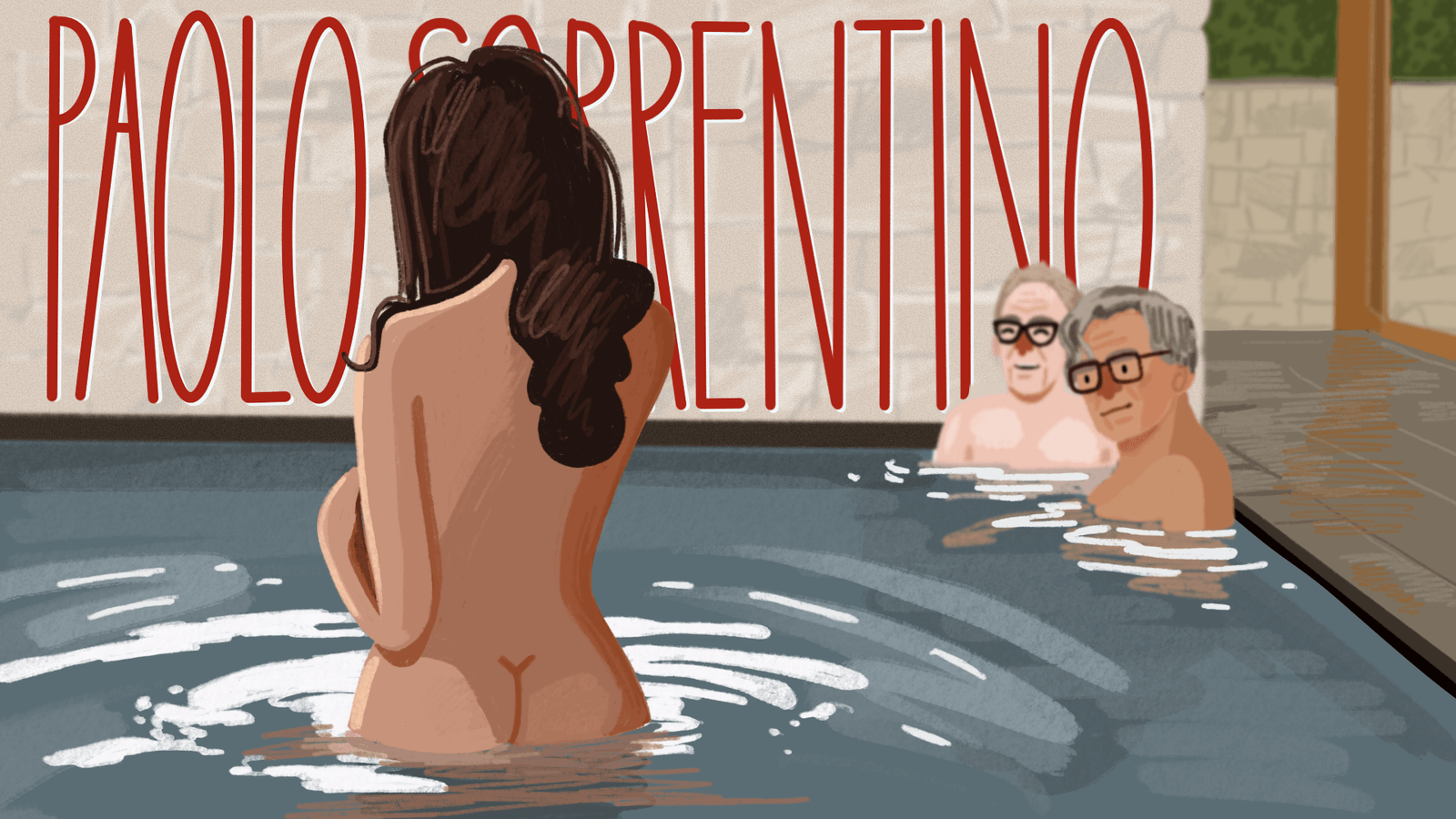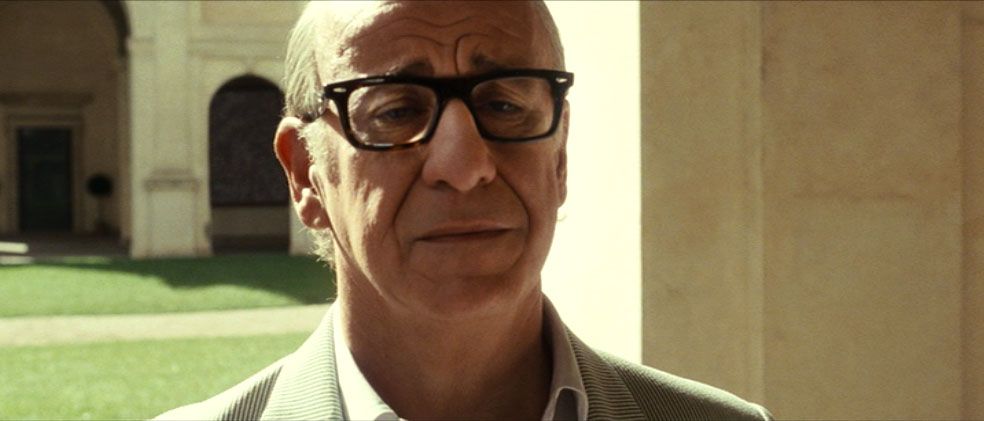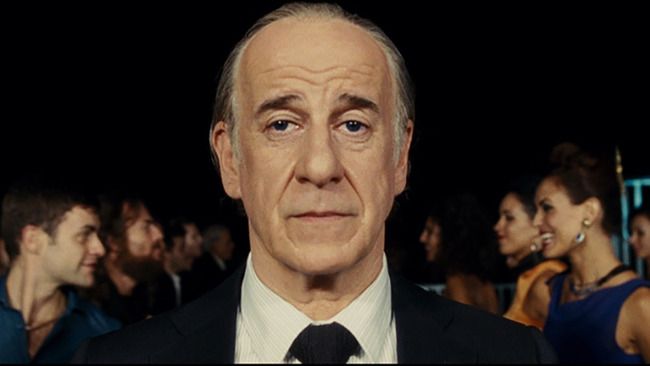In search of meaning: Paolo Sorrentino
What do you think of Italian cinema? We at Filmustage adore it, so our new blog is dedicated to Paolo Sorrentino.


How do your summer evenings go? We hope that in addition to the pleasant company, you sometimes watch movies. Surely everyone has a favorite movie that you're ready to watch every year in the summertime. So Filmustage wants to share not just one film, but the director whose films are so closely associated with romantic summer. Paolo Sorrentino is a filmmaker and screenwriter. The films that make up the director's filmography have won Oscar and Golden Globe awards, the David di Donatello and the Nastro d'Argento awards. Sorrentino's projects are distinguished by sensuality, emotionality, subtle aesthetics, satire, and subtle humor. For this the filmmaker is often compared to Federico Fellini, so we hope you enjoy our summer sketch about the Italian master.
Disclaimer: our blog has no academic purpose behind it, because we are viewers just like you. Filmustage does not aim to educate, but to gather a close-knit film community around us. We can be wrong about certain statements - and that is fine. We are open to discussion and criticism. The main thing is to love cinema and talk about it.
Each director has a different idea of how the script will look on the screen. That's why being able to create the image of your film in pre-production is extremely important. Visualise how you see all the elements in your script with Filmustage's Visual Reference board.
Art by @nadi_bulochka
Biography
Paolo Sorrentino was born in Naples on May 31, 1970. He lived with his family in the Vomero neighborhood. As a child, talking about school made the boy uneasy, because he rarely learned anything, and often did not prepare for classes.
When the young man was 17, his parents were killed in a traffic accident. Despite the bitterness of the loss, Paolo became a student of economics at Federico II University. He planned to link his biography with a profession that would help provide for himself. But in the early 1990s, the young man changed his priorities.
Sorrentino became fascinated by cinema and decided to try himself in this field. The position of assistant director did not satisfy the guy's ambitions, so Paolo began to write scripts. Sorrentino achieved his first success as a screenwriter, receiving the Solinas Prize in 1997 for the screenplay "Dragoncelli di fuoco" ("Little Fire Dragons"). In 1998, he co-wrote the literary basis for the film "Dust of Naples". On this project, Sorrentino worked together with Antonio Capuano. And already in 2001, Paolo Sorrentino dubbed his first full-length feature "One Man Up", which premiered at the Venice Film Festival.
Filmmaker's Philosophy
Paolo Sorrentino has a very sensitive visual taste, which is reflected in his work. That's why we can see a lot of landscapes, long shots, as well as panoramas, such as of Rome, as in "The Great Beauty" (2013). The first shots, which are full of aesthetics, introduce the viewer to the so-called cultural code of Rome, conveying the unique textures, architecture and people of this city.
This is important because Sorrentino talks about the main thing - beauty - for him the rest is false and empty. But what is beauty for Paolo Sorrentino? It seems to us that beauty, first of all, is expressed in a person’s way of thinking. And Sorrentino, as is often the case, puts a part of himself into the image of the hero, so the Italian director's protagonists are always filled with deep thoughts and reflections. It is noteworthy that these existential quests often lead to a dead-end - and this is no reason to give up because the most important thing is to continue on your way. After all, some understand all the beauty and value of life at a fairly young age, someone sees it, stepping over the equator of life, but often all the realization comes at the end of our days. Such is the case with the protagonist of "The Great Beauty" - Jep Gambardella, who in the beginning of the film learns about the death of his only love and realizes that his life was lived in vain. Jep longs for the family that could have happened, but which he never imagined possible. Shattered hopes also manifest themselves in a new world in which there is no idea or meaning and old Jep is among them. A cartoonish confirmation of this fact is the wall-beating conceptual artist who cannot explain the essence of her work.
Jep is an unmistakable reflection of Sorrentino, who tells us that the meaning lies not in the secular life, alcohol or drugs, but in the sincere search for answers. Of course, these discoveries can be painful, Sorrentino says, but it's better to live this way and feel alive than to hit a wall for no reason.
Another example, which is commonly referred to as almost the director's autobiography, is "The Hand of God" (2021). Shot in Sorrentino's homeland of Naples, the film follows Fabietto, who spends his youth on the shores of the Mediterranean, surrounded by a loving, but very numerous and odd family. Sorrentino depicts Fabietto's youth as full of contradictions: puberty and identity crisis comes into conflict with the measured maturation and passion for soccer. Through his films, Paolo Sorrentino portrays a philosophy full of contradictions and crazy combinations.
If in "The Great Beauty" the protagonist is constrained by the dissatisfaction of his life and is therefore forced to embark on an existential quest, on the other hand, in "The Hand of God" Fabietto, constrained by his noisy kin, has not yet found his intonation. It is as if the protagonist understands that he is dissolving into the rumblings of an expressive Italian family, which is why he does not resist. He feels the peace of the family's troubles and sees the beauty in it.
The conflicts in the Italian director's works are almost always emotionally sustained and monotonous. The heroes do not encounter any unexpected drama or miracles that turn the world upside down. They drag out their usual existence until suddenly they realize that tiny changes grow into an avalanche, but it comes off after the credits. Sorrentino's main strength lies in his ability to tame the story by depriving it of a vivid climax.
This is why the stories in Sorrentino's pictures are often calculatedly cold and detached. "The Consequences of Love" (2004) is the epitome of loneliness turned into routine. "Loro" (2018) and, to a certain extent, "The Great Beauty" depict a society crushed by power and corrupted by vulgarity. "Youth" (2015), on the other hand, while exploring personal conflict, does not dive headlong into it. And in each of these films, the humor is akin to caustic irony.
''The Hand of God" goes against this approach. The director suffered a brutal stroke of fate in his youth and put it squarely on Fabietto's shoulders. That's why the bleakness of the second half of the film stands in stark contrast to the warmth of the first. Sorrentino thus turns the film into a poem about the discovery of the meaning of life, about the emergence of personality.
Attention to detail and symbolism
Sorrentino's style can be clearly seen in each of his pictures. The frame is full of juicy contrasts, accentuated by precise and precisely calibrated camera movements that forever strive for a mesmerizing panorama. His almost religious attention to detail, scenery, and costumes make even everyday scenes a visual feast - behind this scrupulousness lies a genuine love for Italy, whether it is his native Naples or alien Rome.
Sorrentino's cinematography makes no claim to anything but a subjective view. You may notice a huge number of close-ups where the protagonist looks not directly into the camera, but as if through it. The Italian director lets us see the thoughts of his characters because, for Sorrentino, the reasoning is the way to find meaning.


Despite the solemnity and scale with which Sorrentino presents Rome, Milan, and Naples to the viewer, the director turns them into detailed monuments.
The details maintain the connection between the different episodes of the film, so Sorrentino uses them as symbolic elements. For example, in "The Great Beauty", the protagonist attends several events dedicated to contemporary art: these are pretentious events where people yurose paints on a canvas or hit a wall as a performative act. These episodes appear at several points in the film and it seems that contemporary art means nothing, but the hero still looks on in fascination, hoping to see how nothing turns into something meaningful.
Here, too, one cannot pass by Paolo Sorrentino's other masterpieces, namely "The Young Pope" and "The New Pope", where Sorrentino's love of detail is evident in his citation of art.
For example, it all starts with opening credits, where Jude Law walks past nine paintings, each marking a particular period in Catholic history. That said, Sorrentino has no piety for the faith and nothing prevents him from putting a neon cross in the nuns' bedroom or inviting Marlin Manson as an actor for a post-modern madness.
Afterword
Sorrentino's filmography numbers a dozen pictures on completely different subjects. However, the stories of public figures, talented creators, and simply unnecessary people can be distinguished by a single leitmotif - these characters are united by an acute lack of meaning in life. Paolo Sorrentino's wanderings in search of meaning in art, able to contain the entire human soul, led him through the streets of ancient Rome and fashionable Milan to his native Naples. Perhaps he shot "The Hand of God" too early, but it may become the Magnum Opus that exposed his soul. One thing is certain: with each film, this director crosses the line that separates the blind tries of the restless researcher from the bold revelations of the mature artist.
From Breakdown to Budget in Clicks
Save time, cut costs, and let Filmustage’s AI handle the heavy lifting — all in a single day.